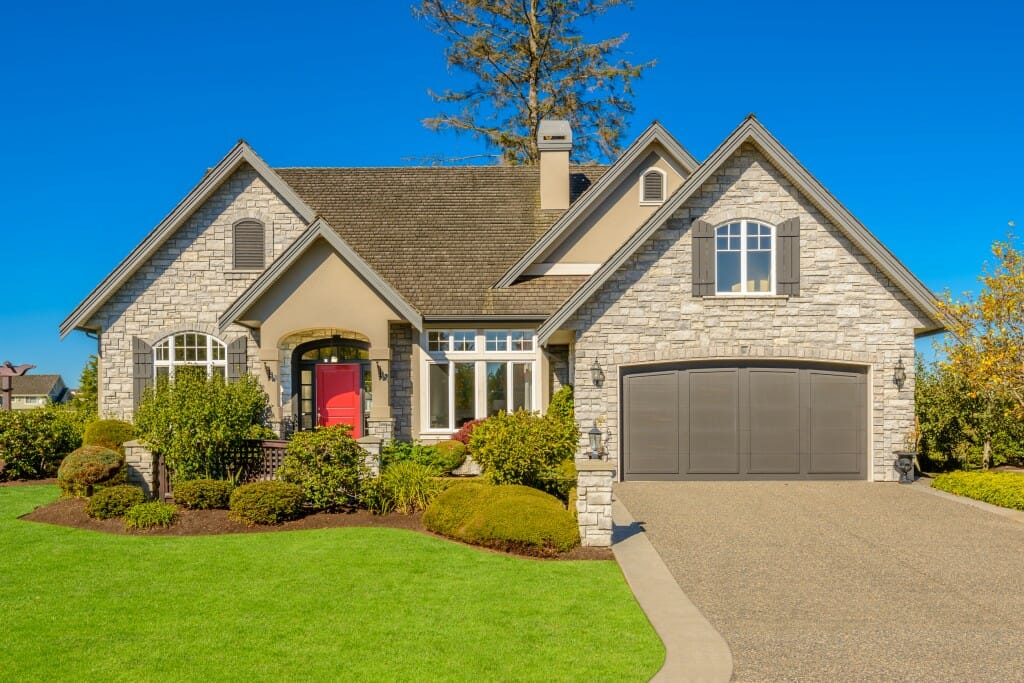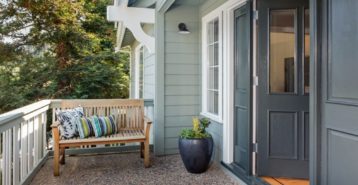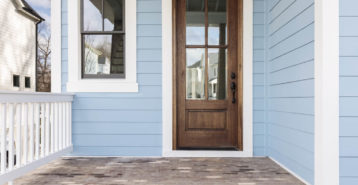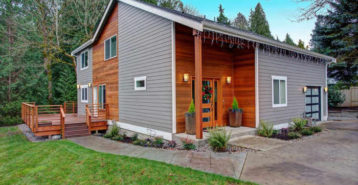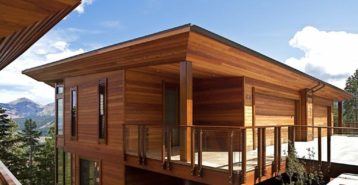Stone Veneer Siding Installation Costs
Want the stunning look of natural stone siding without the high cost? Stone veneer siding offers a budget-friendly alternative at $25 to $30 per square foot less than natural stone. It’s customizable, lightweight, and easy to install, reducing labor costs. Plus, the 2021 Cost vs. Value Report shows it can deliver a 90% or higher return on investment when selling your home.
What is Stone Veneer Siding?
Stone veneer is a type of siding created to imitate natural stones at a lower cost. Part of the reason for the lower cost is that stone veneer is built with affordable and more lightweight materials than real stone.
Natural Stone Siding Cost
Natural stone siding costs $30 to $48 per square foot. On a 1,500-square-foot home, that’s $57,000 to $72,000. By comparison, stone veneer siding runs $5.50 to $10.75 per square foot. The same home would cost $8,250 to $16,125, saving about $25 to $30 per square foot.
Stone veneer is lighter and faster to install, which can reduce labor costs. Total price varies by home size, design, local labor rates, and whether you’re doing a full or partial install. It can also deliver strong resale value — up to 90% ROI in past reporting — making it a cost-effective way to get a natural stone look.
Stone Veneer Siding vs. Faux Stone
Homeowners often hear faux stone and manufactured stone used as if they mean the same thing. The look can be similar, but they are different products.
Faux stone siding comes in lightweight, durable panels made from polyurethane or similar materials. A molded surface and bonded color coatings create a realistic stone texture. Panels cut with common woodworking tools and install quickly, which makes them a good fit for many DIY projects.
Manufactured stone is a cement-based product cast in molds to imitate natural stone. Pieces install one by one with mortar, like an adhered stone veneer system. It can look very authentic, but it is heavier than panels and usually takes longer to install.
| Material | Typical Materials Cost per Square Foot | Install Complexity | Typical Lifespan | Best For |
|---|---|---|---|---|
| Natural Stone | $30 to $48 | High | 100+ years | Full facades, premium projects |
| Stone Veneer (Manufactured/Adhered) | $5.50 to $10.75 | Medium | 20 to 75 years | Budget natural-stone look across large areas |
| Faux Stone Panels | $17 to $19 | Low | Varies by brand | DIY projects, accent walls, quick upgrades |
Stone Veneer Siding vs. Manufactured Stone
Manufactured stone is another common alternative to natural stone, and it differs from stone veneer siding.
Manufactured stone is a cement-based mix cast in molds to mimic real stone. It looks convincing, but it is not as weather resistant or long lasting as full-depth natural stone. The upside is price: it typically runs $6 to $12 per square foot for installed material, which is significantly cheaper than real stone.
Not sure which option fits your home — stone veneer, faux stone panels, or manufactured stone? Talk with a local siding contractor. They can recommend the best choice based on your budget, climate, and your home’s structure and design.
Benefits of Stone Veneer
In addition to providing you with the stunning color and pattern options of more expensive natural stone, veneer stone siding panels have other great benefits.
- Lightweight: Natural stone is very heavy and typically requires a professional installation. Its added weight may also call for a structural assessment. Veneer stone siding panels are much lighter—often around one pound per square foot—so installation is quicker, easier, and more affordable, with less strain on your home’s foundation.
- Better Insulation: The R-value of veneer stone siding can help reduce heat loss in winter and keep interiors cooler in summer, which may lower energy bills. Heating and cooling account for a large share of household utility costs, so small efficiency gains can add up over time.
- Impact Resistant: Many veneer stone siding panels use high-density polyurethane. These panels are designed to resist heat and everyday impacts, offering added protection in areas that see hail or high winds.
Downsides of Stone Veneer Siding
Veneer siding is a strong siding choice, similar in many ways to the benefits and drawbacks of a vinyl siding installation. In terms of drawbacks, they are really only “cons” when comparing veneer stone siding directly with natural stone.
For instance, compared to natural stone, synthetic stone veneer has a smaller lifespan – about 20 to 75 years. This is actually superior when it comes to the lifespan of other siding types, like vinyl or wood. But in contrast, an investment in natural stone will last the lifetime of your home – about 100 or more years. Additionally, stone veneer siding will not provide the same level of fire protection as natural stone.
Frequently Asked Questions
Use these answers to compare options, plan your budget, and prepare for installation.
What are the different types of faux stone panels?
Faux stone panels generally come in three formats. Most common are polyurethane panels, which are lightweight sheets molded from real stone textures. You will also see high-density foam composites with tough exterior coatings for outdoor use. Some brands offer hybrid systems that bond a molded stone face to a rigid backer for added stability. Matching corners, ledgers, and trim pieces help finish edges and transitions.
What materials are used to make faux stone panels?
Most panels use a polyurethane or similar molded face for the stone texture. The surface is finished with UV-stable pigments or coatings to keep the color looking good outside. Many products include integrated ribs or backers to stiffen the panel and improve fastening. Matching accessories, like corners and ledges, are made from the same materials for a uniform look.
What are the maintenance requirements for faux stone panels?
Routine care is simple. Rinse panels with a garden hose to remove dust and pollen. For stubborn spots, use mild soap and a soft brush. Once a year, inspect seams, fasteners, and transitions around doors and windows, and touch up caulk as needed. Keep plants and mulch at least 6 inches away to avoid scuffs from trimmers. Always follow your brand’s cleaning and sealing guidelines to protect the warranty.
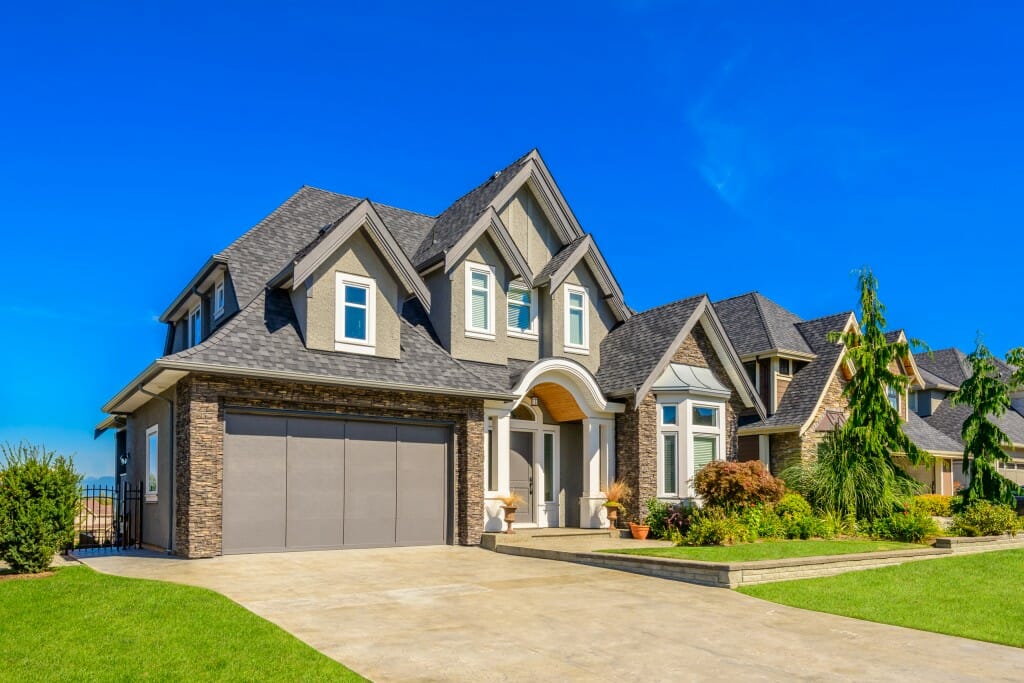
How long does faux stone siding last?
Service life depends on climate, sun exposure, installation quality, and care. With proper installation and routine cleaning, panels can last for years to decades. Following the manufacturer’s instructions on cleaning, sealing, and caulking is the best way to maximize longevity.
Conclusion
Stone veneer, manufactured stone, and faux stone panels all deliver the natural-stone look at a lower price, each with different tradeoffs in realism, installation speed, and lifespan. Start by confirming your budget, project scope, and desired look, then compare costs for veneer, manufactured stone, and panels on the specific areas you plan to cover. When you are ready, Modernize can connect you with a trusted local siding pro to review options, confirm pricing, and schedule installation.
Compare top-rated siding pros in your area.
Read real homeowner reviews, explore qualifications, and view promotions. Modernize makes it easy to browse professionals and find one that will be perfect for your project.


